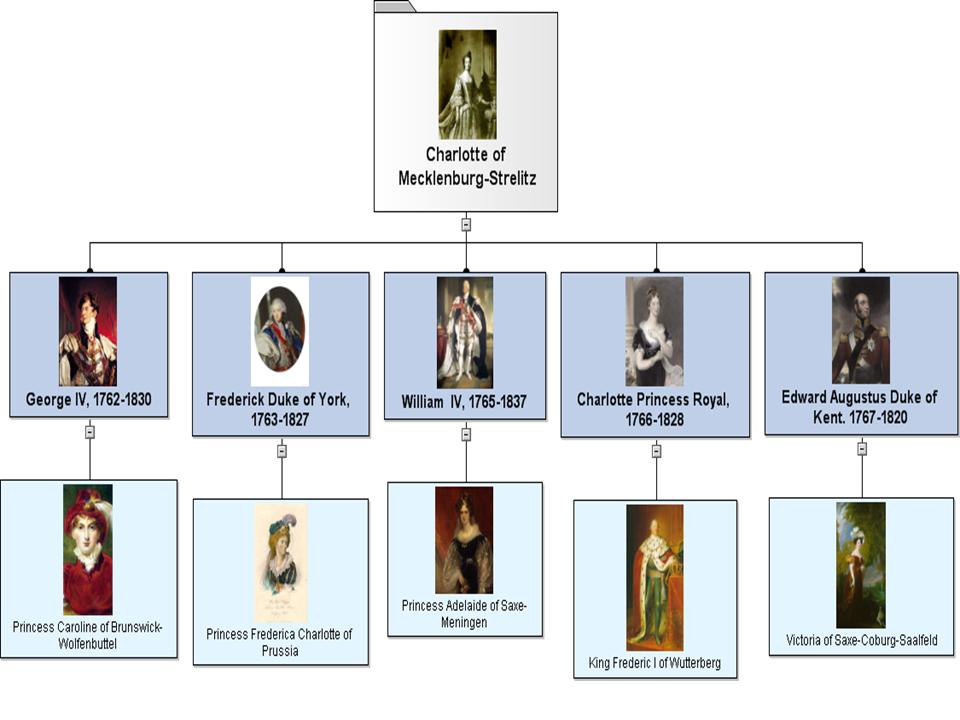Queen Nefertari
Crown Princess and Nubian Queen of Egypt(Kemet) 1292-1225 BC.
Her titles included, hmt nswt wrt mrytf(Great Royal Wife) Nefertari Merit-en-Mut "The Lovely One, Beloved of Mut".
Nothing is known of her early life, she enters the stage as Great Royal Wife of Ramses II referred to in the bible as the one who hardend Pharoah's heart so that he would not let the Hebrews go.
Not to be confused with Nefertiti she is thought to have borne four sons and two daughters for Ramses, although none of her children ascended the throne.
She was one of only two Royal wives to have been deified and had a temple dedicated to her at Abu Simbel.
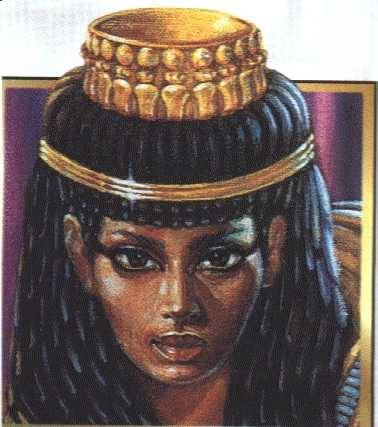
Cleopatra VII Crown Princess and Queen Of Egypt 69-30 BC
This is the most famous of 7 queens with the same name, often portrayed in movies as caucasian, she was of Greek and African descent.
To ensure their rule her two brothers Ptolemy XIII and Ptolemy XIV married her. As she was the crown princess neither of them could inherit the throne without first marrying their sister. It is not recorded whether these marriages were ever consumated, they certainly did not produce any offspring.
In all Cleopatra produced four children, Caesarian (son of Gaius Julius Caesar) Cleopatra Selene II, Alexander Helios and Ptolemy Philadelphus all belonging to Mark Anthony.
She was the last of the Pharaoh's of Egypt and her son Caesarian ruled in name only before he was executed by Caesar Augustus.
Her patron Goddess was ISIS and during her reign it was believed that she was a reincarnation of the goddess, possessing her wisdom.
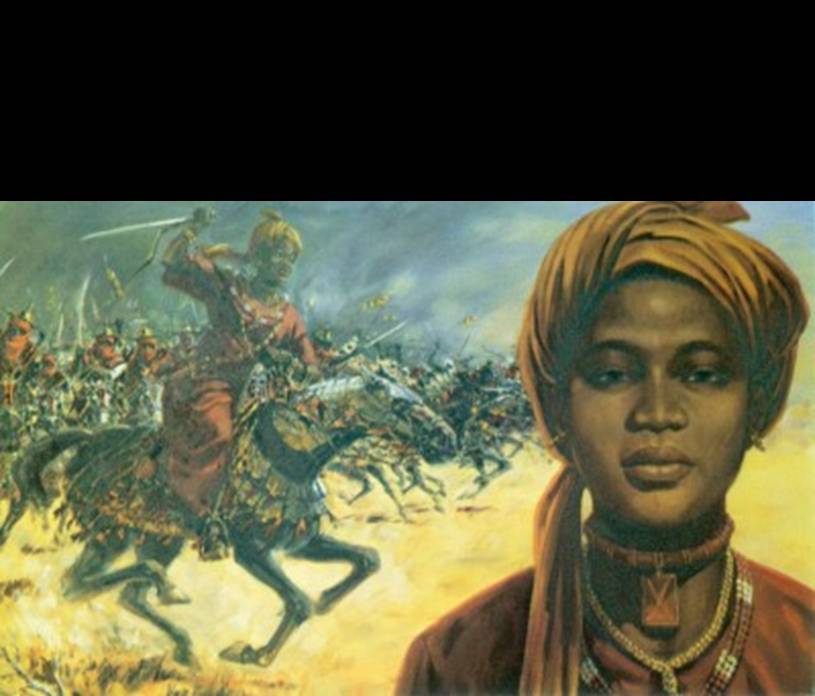
Queen Nzingha (1582-1663) Ruler of Matamba, West Africa, Angola
She was a military leader who waged war against the European invaders, she inspired other African leaders to join in the resistance to white rule.
Early life
Nzinga Mbande also known as Ana de Sousa Nzinga Mbande (c. 1583 - December 17, 1663) was a 17th century queen (muchino a muhatu) of the Ndongo and Matamba Kingdoms of the Mbundu people in south western Africa.
Nzinga was born to Ngola Kiluanji and Kangela around 1582. According to tradition, she was named Nzinga because her umbilical cord was wrapped around her neck (the Kimbundu verb kujinga means to twist or turn). It was said to be an indication that the person who had this characteristic would be proud and haughty. According to her recollections later in life, she was greatly favored by her father, who allowed her to witness as he governed his kingdom, and who carried her with him to war. She also had a brother, Ngola Mbandi and two sisters Kifunji and Mukambu. She lived during a period when the Atlantic slave trade and the consolidation of power by the Portuguese in the region were growing rapidly. Nzinga first appears in the historical record as the envoy of her brother, the Ngola Ngola Mbande, at a peace conference with the Portuguese governor João Correia de Sousa in Luanda in 1622.

Sucession to Power
The immediate cause of her embassy was her brother's attempt to get the Portuguese to withdraw the fortress of Ambaca that had been built on his land in 1617 by the Governor Luis Mendes de Vasconcelos, to have some of his subjects (semi-servile groups called kijiko in Kimbundu and sometimes called slaves in Portuguese) who had been taken captive by Governor Mendes de Vasconcelos' campaigns (1617-21) returned and to persuade the governor to stop the marauding of Imbangala mercenaries in Portuguese service. Nzinga's efforts were successful, in that the governor João Correia de Sousa, agreed to her terms. One point of disagreement was the question of whether Ndongo surrendered to
Nzinga converted to Christianity to strengthen the peace treaty with the Portuguese and adopted the name Dona Anna de Sousa when she was baptized in honor of the governor's wife, who was also her godmother. She sometimes used this name in her correspondence (or just Anna). The Portuguese never honored the treaty however, neither withdrawing from Ambaca, no returning the subjects, who they held as slaves captured in war, and they were able to restrain the Imbangala.
Nzinga's brother committed suicide following this diplomatic impasse, convinced that he would never have been able to recover what he had lost in the war. Rumors were also afoot that Nzinga had actually poisoned him, and these rumours were repeated by the Portuguese as grounds for not honouring her right to succeed her brother.
Nzinga assumed control as regent of his young son, who was then residing with the Imbangala band commanded by Kaza. Nzinga sent to Kaza to have the boy in her charge, and, again according to later reports, won Kaza's heart when he saw her. He returned the son, who she is alleged to have killed, and then she refused marriage to him. She then assumed the powers of ruling in Ndongo. In her correspondence in 1624 she styled herself "Lady of Ndongo" (senhora de Dongo), but in a letter of 1626 she now called herself "Queen of Ndongo" (rainha de Dongo), a title which she bore from then on.
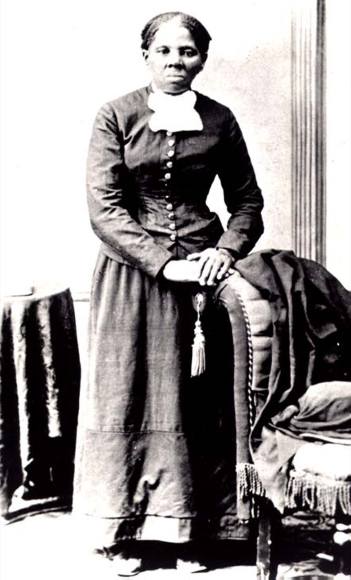
The new Portuguese governor, Fernão de Sousa, arrived in 1624 and entered into negotiations with Nzinga, but from the beginning claimed possession of the kijikos and refused to evacuate Ambaca. This impasse led to war, and de Sousa was able to oust Nzinga from her island capital of Kidonga that year. She fled to the east and reoccupied the island in 1627, but was driven out again in 1629, during which time they captured Nzingha's sister. Portuguese forces pursued Nzinga and the remnants of her army to the Baixa de Cassange district, when Nzinga was only able to escape by climbing down the steep cliffs that surrounded this depression on ropes.
Unable to hold on to Ndongo and deeming the island of Kidonga too vulnerable, she sought to raise a new army by allying with the Imbangala band of Kasanje. He refused her equal status with him, however, and she soon raised sufficient forces to take over the neighboring Kingdom of Matamba, which she accomplished in 1631. During this time she declared herself an Imbangala, and allied with a smaller Imbangala band led by Njinga Mona (Nzinga's child.
The Portuguese and Capuchin priests often asserted that Nzinga's army practiced the rites and rituals of the Imbangala, which included infanticide and cannibalism, but acceptance of such reports must be tempered with knowledge that Europeans often created stories of barbarism to justify the dehumanisation and enslavement of African peoples. However, the stories of Imbangala cannibalism are also reported by African witnesses, such as the kings of Kongo who complained about it. It is unclear whether Nzinga or her armies ever engaged in these rites. Nzinga's own attitude toward Christianity is difficult to discern. After she adopted Imbangala practices during her stay with Kasanje's band, and following the integration of the Imbangala band of Njinga Mona into her army, she may well have engaged in some of their practices, and put herself as an enemy of Christianity.
On the other hand, in her speech to her army in 1657, Nzinga presented the Imbangala alliance as a necessary evil in her war with the Portuguese. Nzinga was respectiful of priests when they were captured by her, and she permitted Portuguese prisoners and Christian Africans to have sacraments. Following the peace treaty of 1657, she became very pious, according to the Capuchin witnesses Gaeta and Cavazzi, and Gaeta at least regarded her as a model Christian.
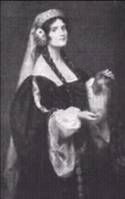
Queen Phillipa 1327-77
First Black Queen of England Mother to The Black Prince.
Daughter of William of Hainault a Belgian Lord, she was chosen at the tender age of 9 years old, by the then King of England Edward II to marry his son Edward III.
She was described by the Bishop of Stapledon as follows
" The Lady we saw has not uncomely hair, betwixt blue-black and brown. Her head is clean shaped; her forehead high and broad and standing somewhat forward. Her face narrows between the eyes and the lower part of her face is still more narrow and slender than the forehead. Her eyes are blackish brown and deep. her nose is fairly even and smooth, save that it is somewhat broad at the tip and flattened, yet it is no snub nose, her nostrils are also broad, her mouth fairly wide. her lips somewhat full especially her lower lip... all her limbs are well set and unmaimed, and nought is amiss so far as a man may see. Moreover she is brown of skin all over and much like her father, and in all things she is pleasant enough, as it seems to us."
Philipa and Edward were married 5 years later and were crowned King and Queen in 1330, at this time she was 17 years old and already heavily pregnant with their first child, Edward (The Black Prince).
Many say that he was called this because of the colour of his armour, but there are records that show that he was called "black" when he was very small. The French called him 'Le Noir'
A very remarkable woman she was wise, known and loved by the English for her kindness. When the King was abroad she would rule as his Regent.
Queens College in Oxford University ws founded under her direction by her chaplain in 1341 when she was just 28 years old.
When she died Edward never really recovered, and she was much mourned by him and the country. King Edward had a beautiful sculpture made for her tomb which you can see today at Westminster Abbey in London.

Legacy
Through her children, Philippa reintroduced the bloodline of an earlier English King, Stephen, into the royal family. She was descended from Stephen through Matilda of Brabant, the wife of Floris IV, Count of Holland. Their daughter Adelaide of Holland married John I of Avesnes, Count of
Philippa was also a descendant of Harold II of England through his daughter Gytha of Wessex, married to Vladimir II Monomakh of
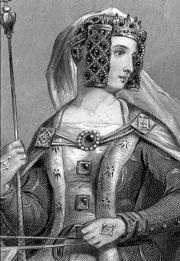
Children of Queen Phillipa
Philippa and Edward had fourteen children, including five sons who lived into adulthood and whose rivalry would eventually bring about the long-running civil wars known as the Wars of the Roses. Their sons are listed below:
Edward, the Black Prince (1330-76)
Lionel of Antwerp, 1st Duke of Clarence (1338-68)
John of Gaunt, 1st Duke of Lancaster (1340-99)
Edmund of Langley, 1st Duke of York (1341-1402)
Thomas of Woodstock, 1st Duke of Gloucester (1355-97)
Another three sons and two daughters died in infancy. There were four surviving daughters, listed below:
Isabella of England (1332-1379)
Mary Plantagenet (1344-1362)
Margaret Plantagenet (1346-1361)
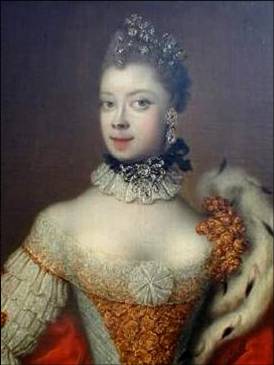
Queen Charlotte, (nee Duchess Sophia Charlotte of Meckelenburg- Stretlitz; 1744 - 1818) was the second Black Queen of England consort to King George III of the United Kingdom.
Queen Charlotte, wife of the English King George III (1738-1820), was directly descended from Margarita de Castro y Sousa, a black branch of the Portuguese Royal House. The riddle of Queen Charlotte's African ancestry was solved as a result of an earlier investigation into the black magi featured in 15th century Flemish paintings. Two art historians had suggested that the black magi must have been portraits of actual contemporary people (since the artist, without seeing them, would not have been aware of the subtleties in colouring and facial bone structure of quadroons or octoroons which these figures invariably represented) Enough evidence was accumulated to propose that the models for the black magi were, in all probability, members of the Portuguese de Sousa family.
Six different lines can be traced from English Queen Charlotte back to Margarita de Castro y Sousa, in a gene pool which because of royal inbreeding was already minuscule, thus explaining the Queen's unmistakable African appearance.
The Negroid characteristics of the Queen's portraits certainly had political significance since artists of that period were expected to play down, soften or even obliterate "undesirable" features in a subject's face. Sir Allan Ramsay was the artist responsible for the majority of the paintings of the Queen and his representations of her were the most decidedly African of all her portraits. Ramsey was an anti-slavery intellectual of his day. He also married the niece of Lord Mansfield, the English judge whose 1772 decision was the first in a series of rulings that finally ended slavery in the British Empire. It should be noted too that by the time Sir Ramsay was commissioned to do his first portrait of the Queen, he was already, by marriage, uncle to Dido Elizabeth Lindsay.
Thus, from just a cursory look at the social awareness and political activism at that level of English society, it would be surprising if the Queen's Negroid physiognomy was of no significance to the Abolitionist movement.
Perhaps the most literary of these allusions to her African appearance, however, can be found in the poem penned to her on the occasion of her wedding to George III and the Coronation celebration that immediately followed.
Descended from the warlike Vandal race, she still preserves that title in her face. Tho' shone their triumphs o'er Numidia's plain, And Alusian fields their name retain; they but subdued the southern world with arms, She conquers still with her triumphant charms, O! born for rule, - to whose victorious brow The greatest monarch of the north must bow!
